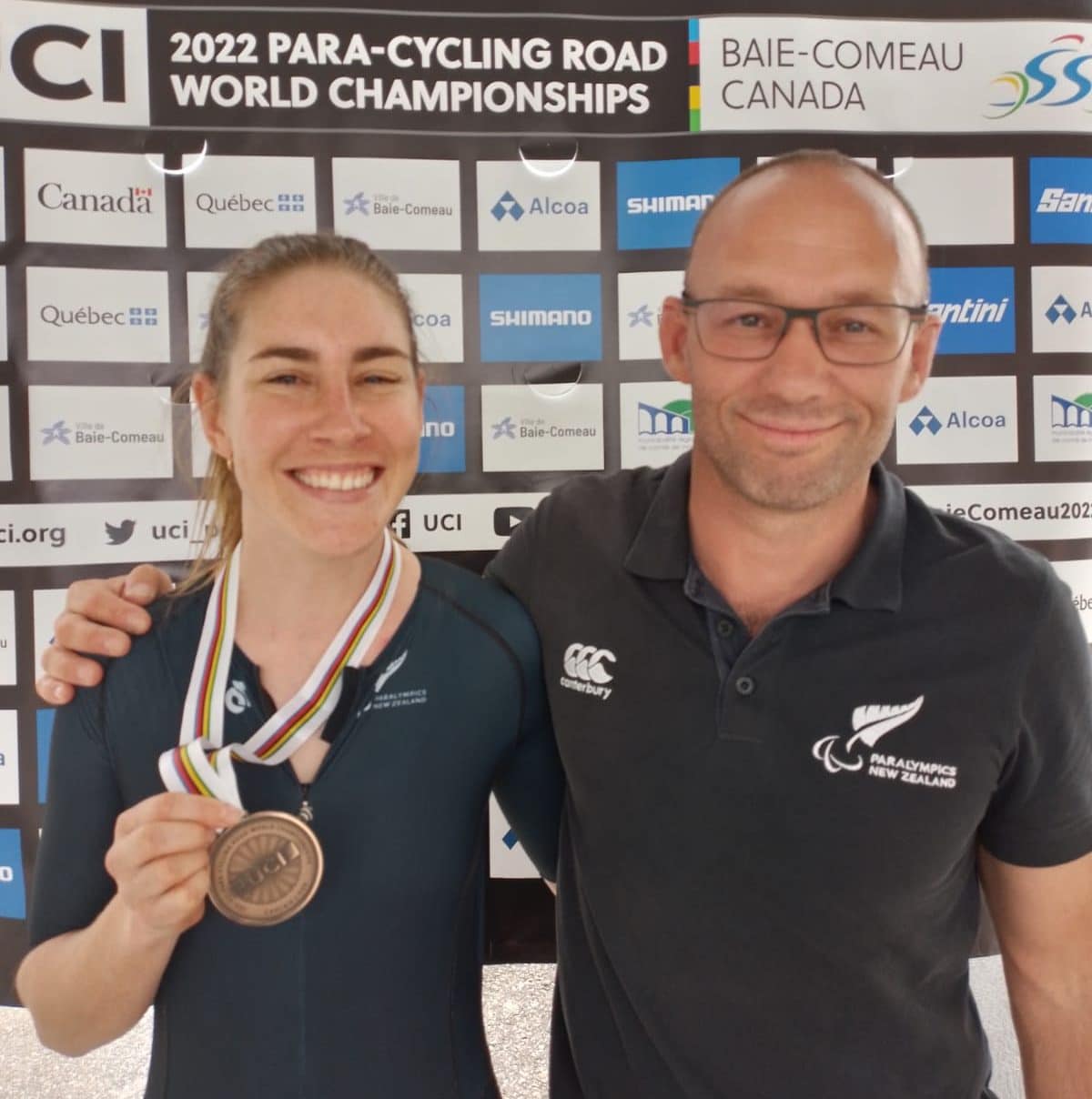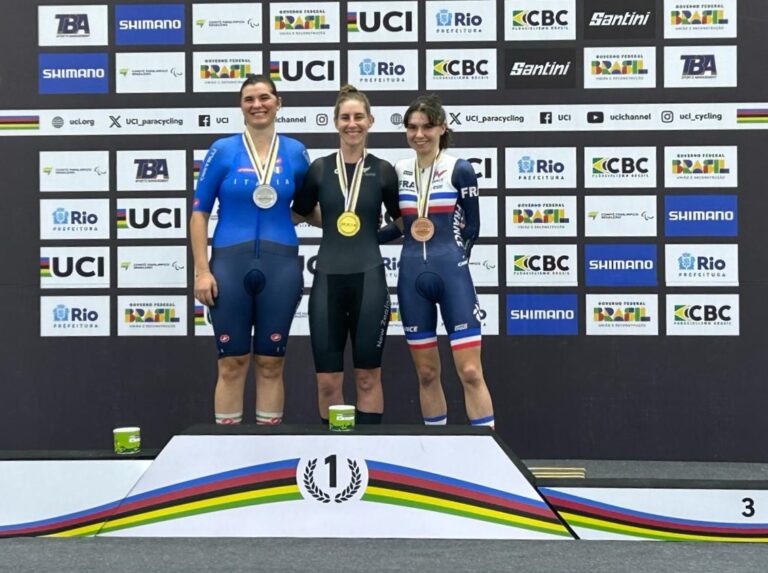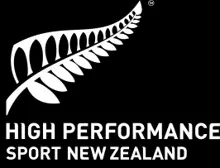Paralympian Nicole Murray wins BRONZE on the final day of the 2022 UCI Para Cycling World Championships. Murray completed the C5 road race in 1:58:44, just 00:02 behind first place. It’s two medals from two races for Murray, who also won silver in the C5 time trial two days ago.
Murray, who has never before won a medal in the road race, is elated:
“Unreal. I can’t believe it. I’m so happy. I thought I was a good while off standing on the podium for a road race, so that was just amazing.”
Murray has a C5 classification. Her left hand is amputated below the wrist following a childhood accident. She rides with some modifications and adaptations on her bike. (Notes on classification in Para cycling are below.)
Coach Damian Wiseman calls Murray’s achievement today “massive”.
“Nicole wasn’t just looking for the result today, she went out to learn and grow. We have a long game focus and Nicole has the Paris 2024 Paralympic Games firmly in her sights. That we’re starting to see dividends now is really awesome.”
Murray wasn’t the only New Zealander to keep us on tenterhooks today.
Paralympian Fraser Sharp kept the heat on the top riders in the men’s C2 road race throughout. Sharp was well-placed in the finish and crossed the line just fractions of a second after the bronze medallist, earning 6th place.
Paralympian Sarah Ellington (C2) rode a strong race, keeping pace with the bunch in which she circulated, and finishing in 7th place.
Wiseman described the mood in the team as buoyant:
“We have a very happy team here. After Eltje [Malzbender] and Stevo [Hill]’s road races yesterday and now the performances we’ve seen today, we have a lot of reasons to be proud of all the work we’ve put in.”
WHAT DO THE CLASSIFICATIONS MEAN IN PARA CYCLING?
Classification groups Para cyclists with an eligible impairment into sports classes, according to how much their impairment affects their ability to carry out the fundamental activities in their sport.
- Para athletes who are able to use a standard bicycle (with approved adaptations) compete in the five sport classes C1-5, Sport class C1 is allocated to athletes with the most severe activity limitation, while the sport class C5 is allocated to athletes with minimum impairments. The C1-5 sport classes include athletes with limb deficiency, impaired muscle power or range of motion and impairments affecting co-ordination, such as uncoordinated movements and involuntary movements.
- Para cyclists who have a visual impairment race on a tandem bicycle with a sighted cyclist (pilot) at the front. They cycle in the sports class B. This class will include athletes with a range of visual impairment from a low visual acuity (less than 6/60) and/or a visual field of less than 20 degrees through to athletes with no vision.
- Para athletes who ride a tricycle are unable to ride a bicycle safely due to impairment affecting their balance and coordination. They are divided into two classes, T1 and T2. The sport class T1 is allocated to athletes with more significant balance and co-ordination impairments and problems controlling movements than athletes competing in sport class T2.
- There are five different sport classes for handcycle racing. The lower numbers indicate a more severe activity limitation. Para athletes competing in the H1 classes have a complete loss of trunk and leg function and limited arm function, e.g. as a result of a spinal cord injury. Para athletes in the H4 class have limited or no leg function, but good trunk and arm function. Para cyclists in sport classes H1 – 4 compete in a reclined position. Para cyclists in the H5 sport class sit on their knees because they are able to use their arms and trunk to accelerate the handcycle. Para athletes in this sport class might have leg amputations, paraplegia or mild to moderate involuntary and uncoordinated movements.






























